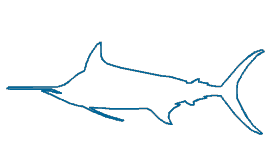more info on the topic http://www.recfish.com.au/hook_to_co...iki%20jimi.pdf
Iki Jimi is a Japanese term meaning quick kill. It is a method used to shut down the fish’s central nervous system promptly so that it prevents stress
and consequently improves the eating qualities of the catch.
There are two main iki jimi methods used, the most common being a spike
to the top of the head, the other being a spike through the gill cover up
towards the brain. The aim of both methods is to destroy the part of the
brain controlling the fish’s movement.
Spiking can significantly decrease spoilage if combined with rapid chilling.
Trained people should only carry out spiking as it requires skill and is only
effective if the fish is alive when administered. Iki Jimi is a humane way of
killing fish when conducted properly.
Mal






 Reply With Quote
Reply With Quote









 VHF CHANNEL 21
VHF CHANNEL 21
